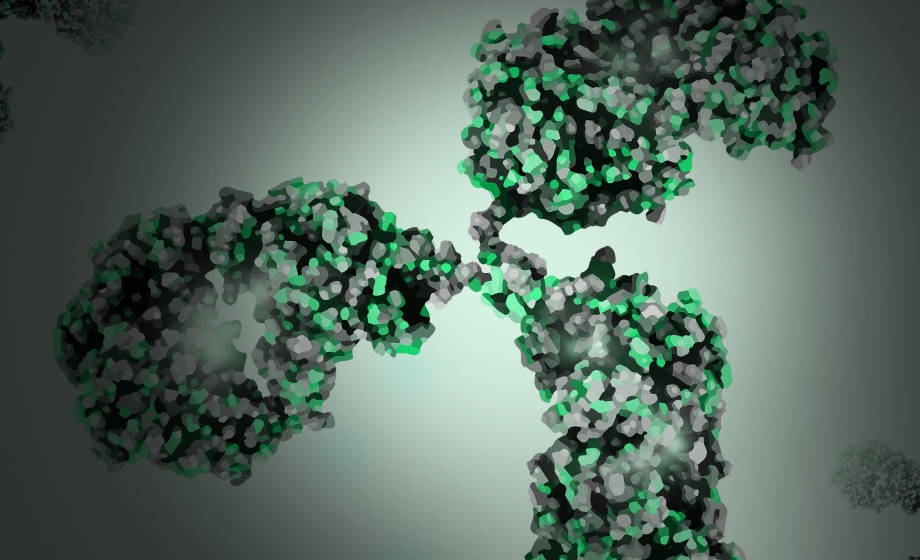Q&A Report: Recombinant Antibody Production: Current Methods and a Novel Antibody Generation Platform

Can you elaborate on using other hosts like E. coli or insects for recombinant antibody expression?
E. coli could be used to produce a recombinant form of fragment antibodies, especially VHHs or scFvs, and there is a relatively rich collection of literature regarding how to use the E. coli system to produce these fragmented antibodies. They are smaller, easier, and less expensive to produce, and don’t require a lot of post-translational modifications.
E. coli does have a secretory pathway, and you can use a signal peptide to direct the antibodies to be secreted in the periplasmic space. But we have to bear in mind that the periplasmic space is limited and you can only put so much material in there. One thing associated with the expression of antibodies using E. coli is you can have relatively low yield, which will make downstream processes more difficult. Also, E. coli is rich in bacteria-associated endotoxins. So if these antibodies will be used in animal studies, additional purification steps might be required to remove excessive endotoxin.
We can also use insects to produce antibodies. We have used insects in the past to make fragment antigen binding (Fab) antibodies. Insects and mammalian cells are similar in some ways, but in order to produce an recombinant antibody (or a recombinant protein, for that matter) using an insect system, you do require a process to generate baculovirus and then transfect the cells and then do the purification afterwards. It takes a bit longer, but in short, you can use insects to produce recombinant antibodies.
What are the major differences between recombinant antibodies expressed by HEK293 cells and CHO cells?
Although HEK293 and CHO are both mammalian cell lines, they are derived from different sources. HEK293 is derived from a human source while CHO is derived from a rodent source (hamster specifically). Because of the difference in their origins, these cells have different glycosyltransferase profiles and expression levels.
One major difference between the antibodies produced by these cell lines will lie in the structure of the glycans, especially the terminal sialic acid decorations: the HEK293 and CHO cell lines will have different levels of the sialic acid in their antibodies’ glycan. These sialic acids might be connected to the glycan backbone via different linkages and can cause issues in some assays.
Since Fc glycans seem to contribute to the heterogeneity of recombinant antibodies, could we just remove the glycan chains?
Yeah, that’s certainly a way to get around this issue. However, I would encourage everyone to remember that the glycans are there for a reason. They’re associated with effector functions. And also in the meantime, these glycans could add a level of hydrophilicity to the antibody molecule so if we just abruptly remove the glycans, we will still be able to produce these antibodies, but I think without these glycan shields, these antibodies might be less stable than the glycosylated version.
The short answer is yes, we can just remove the glycans by introducing single amino acid mutations, but glycans are important. So I think it’s still better to keep them there, but find other ways, perhaps through some form of glycan engineering, to reduce the heterogeneity or to make the glycan chain of an antibody produced in a CHO cell line as similar as possible to those produced by human B cells or human cell lines.
How do you choose a suitable buffer for recombinant antibodies?
That’s actually a very good question, and it’s something that we encounter all the time. It all boils down to two points. In order for a buffer to be suitable for an antibody, we would need to consider the compatibility with the follow up assay as well as the stability of the antibody within this buffer.
A lot of people use a PBS buffer because it’s a “physiological buffer” and does have a lot of advantages. However, we do observe that some antibodies are not stable in PBS and in this case, then we will have to either switch buffer bays, for instance, using a Tris-based buffer or other physiological buffers such as MES or HEPES, based on the stability of the antibody.
Also, sometimes we would consider putting additives into the system. Glycerol is the most common additive and has proven to be the least problematic of the many other additives, but sugar residues or a small amount of detergent can also sometimes be introduced.
When selecting additives and the buffer, you have to make sure that whatever you put in the system is not going to interfere with your downstream assays or applications. For instance, if you want to make chemical modifications to the antibody, then probably a Tris-based buffer is not going to be very suitable, since most of the modifications are done using the lysine residues and the Tris buffer has a primary amine that can interfere with these reactions.
I think a suitable buffer is a buffer that ensures the stability of the antibody and ensures assay or application compatibility for the downstream processes.
Do you have a favorite format of recombinant antibody and what format do you think is the most challenging to make?
Every antibody is unique. Even for IgG1s, sometimes we see strange behaviors between different preparations or between different constructs. I’ll answer the second part first, though. Out of the antibodies that we’ve made so far, the IgMs are definitely considered the most challenging, because they’re huge molecules to begin with, and we have to ensure their purity and ensure that they reach the correct oligomerization status.
It’s a little more challenging to both produce and purify these proteins, and that being said, for now my favorite format is IgM because we do like a good challenge.